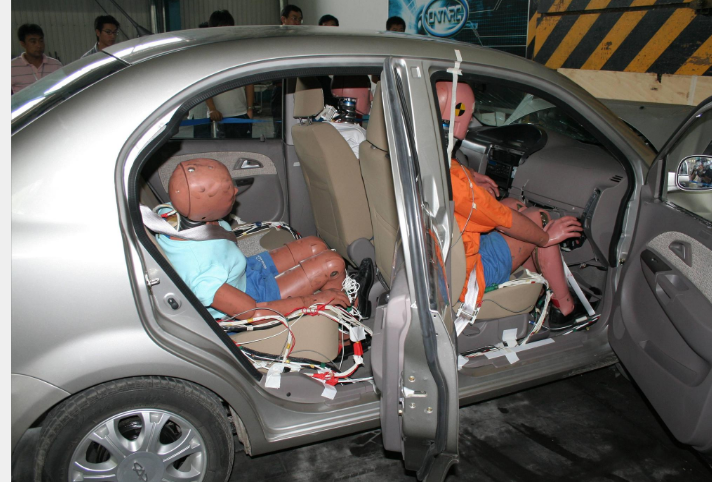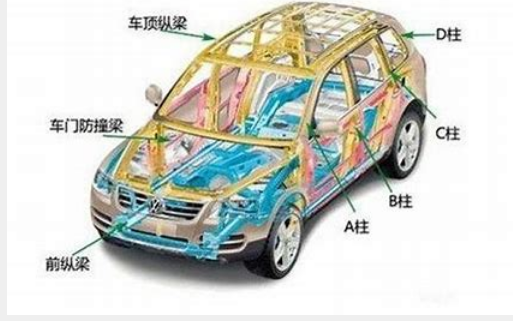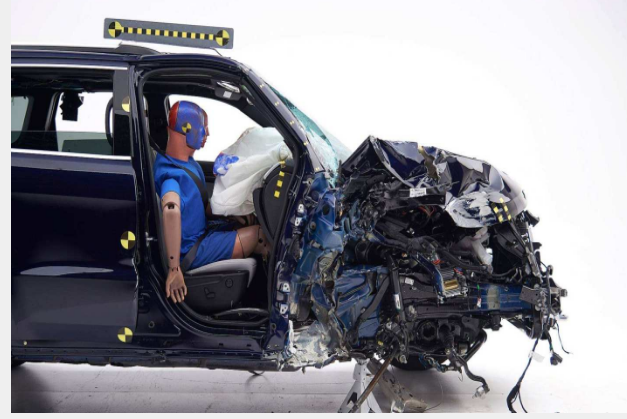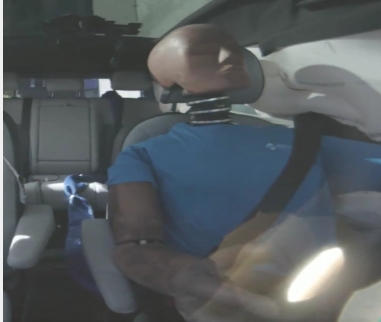1. Industry background of collision testing for new energy vehicles
In 2021, the total production of new energy vehicles worldwide has exceeded 6.7 million units, with sales in China approaching 3.54 million units. But behind the popularity, we still have some concerns about the safety performance of new energy vehicles.
Many people are skeptical about the safety of new energy vehicles, thinking that in the event of a violent collision, traditional vehicles are not as safe. Will the battery leak, catch fire or explode, and can it protect the safety of passengers in the cabin? Currently, most new energy electric vehicles undergo collision tests to test their safety performance.
2. The main purpose and problems to be solved in collision testing of new energy vehicles
The evaluation agency evaluates the safety of cars through collision tests and publishes test results to provide consumers with reference for choosing cars. At the same time, it also urges automobile companies to design and manufacture cars with higher safety, protect all participants in road traffic, and achieve the goal of reducing the number of casualties.

3. Different types of sensors involved in collision testing of new energy vehicles
(1) Single axis acceleration sensor, mainly used to study the impact of front, rear, side, and overturning, usually installed by pasting. These sensors are used to measure the impact of obstacles, pillars, other vehicles, or the road itself on the structure of the test vehicle.

(2) Three axis acceleration sensor, function: Generally speaking, the advantage of a three-axis acceleration sensor is that in situations where the direction of object motion is not known in advance, only three-dimensional acceleration sensors can be used to detect acceleration signals. The three-dimensional accelerometer has the characteristics of small volume and light weight, which can measure spatial acceleration and comprehensively and accurately reflect the motion properties of objects. Application in vehicle safety, control, and navigation systems. Before entering the consumer electronics market, acceleration sensors were actually widely used in the field of automotive electronics, mainly focused on body control, safety systems, and navigation. Typical applications include airbags, car dummy testing, ABS anti lock braking systems, electronic stability programs (ESP), electronic suspension systems, etc.

(3) Equipped with displacement sensor, function: The seat belt displacement sensor can convert the displacement (i.e. pulling out) of the seat belt into an analog voltage signal output, used to test the tension of the seat belt and the performance of the seat. In actual testing, it is necessary to try to achieve a seat belt pulling speed of 20m/s. If the input and output signals of the seat belt displacement sensor are only tested under manual pulling conditions as performance indicators of the sensor, it is obviously not rigorous. Meanwhile, if the pulling speed is very low, the tested seat belt pulling speed and displacement cannot meet the requirements of the seat belt displacement sensor in high-speed collision experiments
(4) The artificial human body acceleration sensor can capture various data of drivers and passengers during accidents, including frontal and side collisions. The statistical results can help car manufacturers better understand the safety performance of vehicles. The collision test dummy can be competent for testing any scenario, and a damaged part can be repaired and replaced to resume work.

(5) The multi-dimensional seat acceleration sensor is mainly used to monitor the three-axis acceleration value of the driver's seat, which can identify the cause of vibration throughout the driver's body, thereby improving or controlling vehicle vibration. The methods include air driven shock absorbers, shock absorbers in the driver's cabin, maintaining the vehicle's shock absorber system, and appropriate tire inflation.Through experimental analysis, it was found that there are two types of vibrations: one is the instantaneous peak vibration (enough to shake you out of your seat), and the other is the repetitive vibration generated by vehicles walking on uneven roads. All objects have mass and resonance frequency, which excites this particular object. Just like when you ring a bell, it will vibrate for a relatively long time after being struck. This vibration can damage the structure inside the body.As is well known, vibrations between 2.5 and 5 Hz generate strong resonance in the cervical and lumbar vertebrae. When the human body is subjected to vibrations of 4 to 6 Hz, it is amplified twice within the body. Vibration between 20 and 30 Hz can cause resonance between the head and shoulders. These vibrations can cause chronic muscle strain, and even permanent damage to the affected area. The most common impact of whole-body vibration is back pain. Long term whole-body vibration may stimulate spinal tissue. The result is lumbar disc degeneration, leading to functional damage or nerve compression
(6) Acceleration calibration device, function: to calibrate sensors, ensuring that the sensitivity accuracy of each sensor is within a reliable control range;
4. Senther Technology sensor products involved in collision testing of new energy vehicles
(7) Low noise three axis integrated piezoelectric vibration sensor 530A performance characteristics: simultaneous measurement of three axes, small size and volume structure, metal welding sealing, circular shear mode, broadband response; Widely used in vibration testing of battery packs.
(8) Performance characteristics of the 430 series three-axis integrated vibration sensor: The 430 series is a lightweight, wideband responsive miniature three-axis acceleration sensor designed specifically for collision testing. It complies with SAE J211 collision equipment testing standards and currently has two range ranges, 2000g and 6000g, respectively. This 3-axis accelerometer adopts the latest piezoresistive MEMS sensitive element accelerometer, which has excellent dynamic response characteristics and stability. Built in full bridge temperature compensation within the range of 0-50 ℃, with lateral sensitivity
(9) Performance characteristics of small volume water droplet type single axis vibration sensor 710A: microstructure, adhesive installation, metal welding sealing, circular shear mode, broadband response
(10) Multidimensional Seat Acceleration Sensor 890 Performance Characteristics: The 890 series product is a static seat cushion acceleration sensor specifically designed to measure the human body's response to vibration. This model meets the requirements of ISO-2631-1 and ISO-8041 standards. The interior of this product is a movable three-axis acceleration sensor with an output signal of+/-200mV, using MEMS silicon chips as sensitive components; The measurement resolution can reach 1.5mg, suitable for static and low-frequency measurements, and the signal is output through cables.Unlike ordinary sensing element designs, this MEMS accelerometer adopts variable capacitance technology, which can achieve very small sensitivity deviation throughout the entire working temperature range, allowing testing engineers or technicians to simultaneously measure the vibration acceleration of three axes on the vehicle or testing platform. It has good reliability and characteristics: long-term stability micro triaxial accelerometer, excellent low-frequency response, flexible cable output, adhesive or screw installation, circular shear mode, broadband response, and optional installation isolation.
(11) Multidimensional seat acceleration sensor 790 performance characteristics: high-frequency response range • 50g range • stable voltage output • 5K g impact resistance • plug and play
(12) Performance characteristics of damping acceleration sensor 410 for artificial human body internal acceleration sensor:
(13) Performance characteristics of artificial human body acceleration sensor 412: SAE J211 compliance, DC response, 2000g impact, low and high frequencies, 10kg impact, 2-10VDC excitation
(14) Performance characteristics of seat belt speed displacement sensor D211: high resolution, measurement range+/-2m meters, wide power supply range, reliable indicator light display, speed response of 50 m/s, low power consumption, support for ID Module • LED movement indicator
5. In summary, the application of this article mainly introduces the application background of the main industry of collision testing for new energy vehicles, as well as the purpose and role of related sensors, to help everyone have a good understanding of the relevant application knowledge in this industry.


